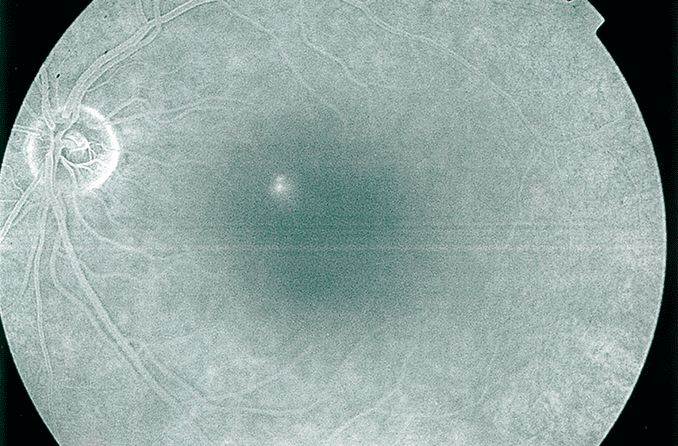Many of the changes of pregnancy are well understood — hormonal surges, food cravings, shifts in mood, morning sickness, an expanding belly — but not all women know that vision changes can also accompany those 40 weeks of gestation.
The cascade of hormones flooding a pregnant woman’s body affects every tissue and organ, including the eyes.
Most ocular changes are transient and mild and will clear up after delivery, though a few may signal a more serious issue.
Here is an explanation of the most common eye changes of pregnancy, what causes them, and what to do about them.
Blurry vision and dry eyes
The surging hormones of pregnancy can change the quality and amount of tear production in the eye, leading to dry eye syndrome, with symptoms including excessive tearing, intermittent blurry vision and a scratchy, often burning sensation.
This occurs because the tiny, lubricating glands that line the upper and lower eyelid margins (called Meibomian glands) produce less oil to keep the eyes moist. The glands may be temporarily affected by pregnancy’s lower levels of hormones called androgens.
Symptoms of dry eye can often be treated with over-the-counter artificial tears, as well as soothing warm compresses.
Your doctor can also prescribe drops that treat the inflammatory nature of dry eye syndrome. See our informative guide on the best ways to get relief for dry eyes.
LOOKING FOR A DRY EYE SPECIALIST? Find an eye doctor near you who specializes in the treatment of dry eye syndrome.
Refractive changes
Clarity of vision depends on the way our eyes bend, or refract, light. Deviations from the norm of 20/20 are called refractive errors, which can be corrected with glasses or contact lenses.
Pregnancy can change how your eyes refract light because water retention (think of swollen feet, fingers and ankles), can thicken the corneaand alter the front surface of the eye. This may cause changes in vision.
Vision will generally return to normal after childbirth.
If changes are minor, experts advise waiting until several weeks postpartum to prescribe new contact lenses or glasses.
Migraines and increased sensitivity to light
Around 40% of women of reproductive age will experience migraines at some point in their lives.
Pregnant women who suffer from migraines often experience some relief in the second and third trimesters of pregnancy, but migraines may flare in the postpartum period because of abrupt declines in estrogen levels.
Sensitivity to light, also called photophobia, is a common symptom of migraines.
“We treat migraines with pain medications that are safe for babies,” says obstetrician Keisha R. Callins, MD, MPH, clinical assistant professor at Mercer University School of Medicine in Macon, Georgia.
“We also recommend simple measures like wearing sunglasses or turning lights off in a room,” she adds.
Vision changes may warn of dangerous condition
Your eyes can provide a warning sign of a potentially serious condition during pregnancy: preeclampsia, or dangerously high blood pressure.
This complication affects around 5% of pregnant women and may occur around the 20th week of gestation.
New-onset hypertension and proteinuria (excess protein in the urine) are two cardinal symptoms of preeclampsia, and because blood pressure can soar rapidly and endanger the health of both mother and baby, medical attention is critical.
Obvious eye symptoms include blurred vision, auras of flashing lights, floaters or dark spots in the field of vision, sudden inability to focus the eyes, and even temporary blindness.
More significant eye problems can occur, though, including retinal swelling and bleeding. Headaches and digestive distress are often present.
“It’s critical not to ignore these warning signs,” Dr. Callins says. “If you have these symptoms, go to your doctor to get checked out. Hypertension in pregnancy is the No. 2 cause of maternal mortality.”
Dr. Callins says treatment with blood pressure medications may work, and in some cases, if the pregnancy is far enough along, early delivery is an option.
“I just delivered a baby at 31 weeks,” she says, “because the mother had a blood pressure of 200/100.”
Dr. Callins reports that both baby and mother are fine. She says that if a mother has had an episode of preeclampsia in a previous pregnancy, daily aspirin is recommended.
“It can help alleviate or prevent the problem before it occurs,” Dr. Callins says.

Diabetes and pregnancy present a risk
Mothers-to-be with diabetes must be monitored carefully during pregnancy, Dr. Callins says, because pregnancy can worsen a preexisting eye disease.
Diabetes is known to damage the small blood vessels in the retina at the back of the eye, resulting in diabetic retinopathy.
Signs of diabetic retinopathy include blurry vision, floaters and dark spots in the field of vision; fluctuating vision; dark or empty areas in the field of vision; and impaired color vision.
“Some diabetics on oral insulin may need to be converted to injectable to control their diabetes better,” Dr. Callins says.
She monitors for rare but serious complications such as retinal detachment, which requires immediate laser surgery to repair.
Gestational diabetes — a condition that flares up during pregnancy and then disappears after childbirth — can also cause blurry vision.
LOOKING FOR A VISION & DIABETES SPECIALIST? Find an eye doctor near you who specializes in the treatment of diabetes-related vision issues.
Changes in eye pressure
Our eyes contain clear fluid that is in continuous circulation and helping keep the eye “inflated” just as air keeps a balloon inflated.
Normal eye pressure changes throughout the day, usually between 10 and 21 mmHG (millimeters of mercury).
During pregnancy, eye pressure can decrease slightly.
If a pregnant woman is being treated for glaucoma, she should review her medications with her doctor to be certain they are safe during pregnancy.
Pregnancy and contact lenses
If contact lens wear is uncomfortable during pregnancy, your vision care provider may consider daily disposable soft contact lenses or specialty lenses that can address issues related to dry eye. He/she may also alter your contact lens wearing schedule.
“I often tell my patients not to wear contact lenses, or to take breaks from them, as they can be especially irritating with dry eyes during pregnancy,” says Jessica Cameron, OD, FAAO, an optometrist in the Department of Ophthalmology at the University of Florida in Gainesville.
“I also recommend a good lubrication regimen with artificial tears and ointments,” she adds.
Pregnancy and LASIK: Wait
Doctors do not recommend LASIK (refractive eye surgery) during pregnancy, since these vision changes are often temporary.
Waiting at least six months postpartum is advised for refractive surgery.
“I see these kinds of refractive changes throughout pregnancy,” Cameron says. “If a woman is really bothered, I will change her prescription, but I reassure her that this is expected and all will return to normal after delivery.”
SEE RELATED: Eye twitching during pregnancy
Pregnancy and your eyes
Pregnancy is a glorious time when the body is changing rapidly, and it makes sense to nourish your entire body, including your eyes, with healthy foods and an adequate amount of rest.
Make sure to eat well, including lots of leafy green vegetables, fruits, nuts and fish high in omega-3’s, such as salmon and sardines.
Finally, get plenty of rest, keep hydrated, and look forward to the moment you will see, with your own eyes, your newborn baby.
READ MORE: Women's Eye Health & Safety Month






